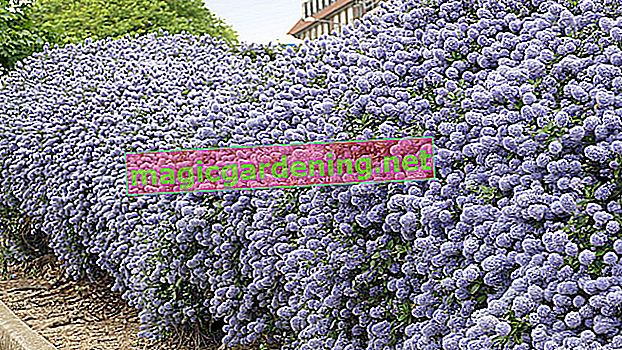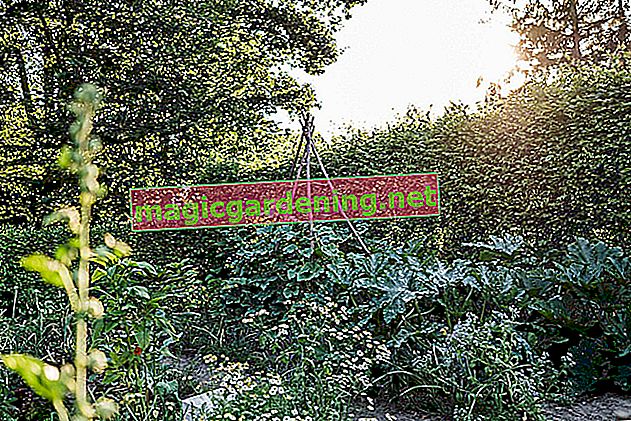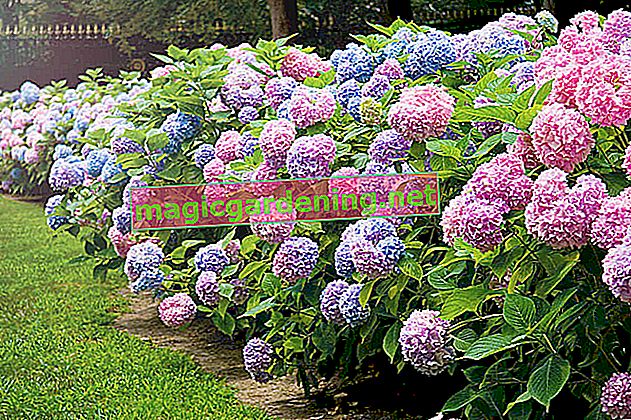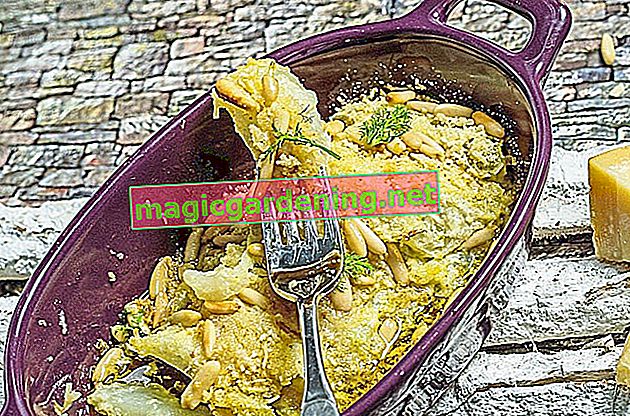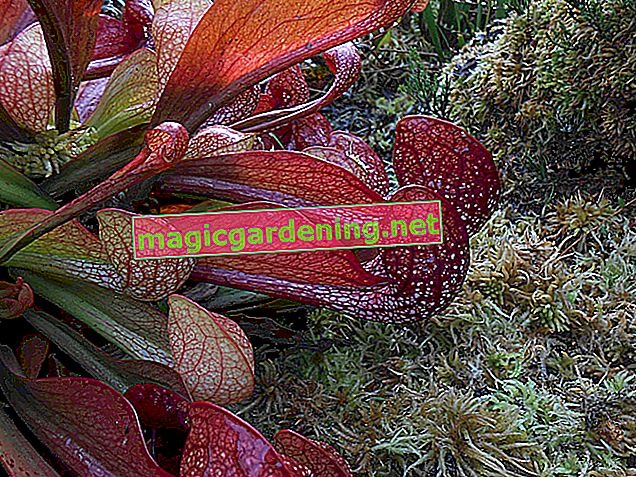
origin
The heather carnation with the Latin name Dianthus deltoides belongs to the carnation family. Their distribution area extends across Europe to western Siberia to the Yenisei. Outside of these habitats the species does not occur naturally. In Argentina, North America and New Zealand the heather carnation went wild from planted stocks. She avoids substrates with a high lime content.
also read
- Heidenelke prefers a sunny location
- Is the heather hardy? - Tips for an undamaged winter storage
- Plant and care for carnations
The heather carnation grows in these habitats:
- dry sand and silicate grasslands
- rudderal meadows
- in flat and hill country
growth
Heather carnations are herbaceous plants that hibernate with their runners above ground and creeping above the ground. Creeping stems emerge from them, which branch out at the base and then rise. As a result, the delicate and short-haired stems develop a lawn-like habit. Heather carnations grow between ten and 40 centimeters high.
leaves
The leaves are opposite in pairs on the stem. Their surface is gray-green in color and densely hairy. The leaf blade is narrow and reaches a length of up to 2.5 centimeters. In the flowerless state, the plant is easy to mistake for a grass.
blossom
Dianthus deltoides bears terminal flowers that are composed of five purple petals. The petals are frayed at the edge. Near the center of the flower they have white speckles and a dark mark that is reminiscent of a triangle. This particular pattern gave the plants their botanical species name “deltoides”. The flowers stand individually or in groups in panicle-shaped inflorescences. They are hermaphroditic, purely masculine or feminine.
Heyday
Between June and September the splendor of the heather carnations shines. They open their flowers in the morning hours and close them in the evening. The pollinators mainly included butterflies, which are impressed by the color of the flowers. Heather cloves give off a subtle scent that is perceived by some people.
fruit
Heather carnations develop capsule fruits that dry up to maturity and release numerous seeds. As a cold germinator, the seeds need low temperatures to stimulate germination.
use
The heather carnation feels particularly at home in gardens with stone and gravel areas. Their flowers set a color accent in heather gardens. The herbaceous plants decorate embankments facing south, niches on dry stone walls or similar habitats in natural gardens. They are suitable for planters and can be cultivated on roof gardens, balconies and patios.
Matching plant neighbors:
- Red ostrich grass (Agrostis capillaris)
- Common gorse (Genista sagittalis)
- Thyme (Thymus vulgaris)
- Oregano (Origanum vulgare)
- Cushion bellflower (Campanula poscharskyana)
Edible
The heather carnation flowers are edible and can be used as a decoration for hearty salads and sweet fruit salads. They garnish desserts and refine fruity bowls with their sweet aroma.
Which location is suitable?
Dianthus deltoides grows in full sun with dry conditions. The plants find optimal growth conditions on stony ground because the stones store heat. Heather carnations bloom more profusely, the warmer and more open their place of growth.
Continue reading
What soil does the plant need?
The native perennial prefers a well-drained substrate in which no waterlogging occurs. The pH value is ideally in the acidic range. It is considered to be slightly tolerant of lime. Their growth is severely restricted on calcareous substrates. As a typical species in poor locations, the heather clove copes well with nutrient-poor soils.
Propagate heather
A division of the stands is not recommended because the sensitive wild shrub does not grow well after the measure. You can propagate heather carnations by seeds or cuttings.
sowing
A cold stimulus promotes germination. If you collect capsule fruits from your plants in the fall, store the seeds in a cool and dry place until next spring. You can start growing the seeds on the windowsill in the mini greenhouse (€ 6.96 at Amazon *) as early as February. Use nutrient-poor potting soil or coconut gum. From April the seeds are sown directly in the bed. Sprinkle the seeds thinly on the substrate, because the young plants quickly expand in all directions.
Interesting facts about Kokohum:
- consists of fibers of the coconut
- is offered in pressed briquette form
- Pellets are soaked in water before sowing
- good water storage
- ideal ventilation
Cuttings
To propagate cuttings, cut off flowerless shoots from a plant close to the ground. You can cut off cuttings by summer. Remove the lower leaves and place the shoots in potting soil.
What is the best time to plant?
The ideal time to release the young plants is from May. You can put heather carnations in the bed earlier if there is no danger of night frosts.
The correct planting distance
Plant heather carnations in small groups for a beautiful long-distance effect. A distance of at least 15 centimeters is ideal. For extensive planting, you can distribute about 16 plants on one square meter. Humous and nutrient-rich soils should be emaciated with sand or gravel before planting.
Heather carnation in a pot
As an undemanding plant, Dianthus deltoides can easily be cultivated in pots. Put a single plant in a tub or tub. You can use discarded planters which, due to damage, can no longer be used for perennials with a higher water requirement. Make sure that the drainage is sufficiently high.
Within the next one to two years, the heather carnation with its runners has spread completely in the bucket, so that breaks or blemishes quickly become invisible. If you place the vessel in a sunny and warm location, you can look forward to a longer flowering period.
balcony
Heather cloves thrive on south-facing balconies. Small biotopes can be created with the native wild perennial and other herbaceous plants that are typical of poor grasslands. Plant Dianthus deltoides among thyme, field bellflower and round-leaved bellflower, orange hawkweed and corn wheel. The arrangement not only offers sensual pleasures to the eye, but also increases the variety of bees, butterflies and birds on your balcony.
Watering heather carnation
Heather carnations have a low water requirement. Their grass-like leaves evaporate little water because they have a reduced leaf blade and are additionally protected by a layer of wax. Only water the plants during very long dry seasons when growth has stagnated. The leaves turn yellow quickly when they get water. Flowers rot easily from too much moisture. Water heather carnations only in the root area.
Fertilize heather carnation properly
There is no need for fertilizer, as Heidenelken specialize in poor locations. If an additional supply of nutrients is necessary, you should use the fertilizer sparingly.
Cut the heather correctly
Heather carnations do not need to be cut. Regularly remove dead shoots and withered inflorescences so that the plant is stimulated to form new flowers. The perennials are short-lived and secure their survival by self-sowing. Let some of the flowers ripen into fruit for the seeds to sow.
How do I transplant properly?
Since the heather carnation reacts sensitively to disturbances in the habitat, grown stocks should not be replanted. If the wild shrubs need a new place, you should rejuvenate the stock with cuttings and plant them in the new location. Potted plants do not have to be moved either. The roots of the carnation plants remain compact, so that one planter is sufficient for many years.
Hardy
Dianthus deltoides is hardy and does not need any protection in the cold season. The crawling shoots above ground are protected by the snow cover. You should refrain from mulching, as this measure leads to moist substrate conditions. The plant does not survive waterlogging in winter.
Hibernate potted plants
Potted plants are more prone to frost because the substrate freezes quickly. Protect the bucket with fleece or jute sacks and place it on a wooden board. Place the container in a sheltered place so that no rainwater or snow collects in the pot. Plants are moderately watered on frost-free and sunny days.
Continue reading
Fungal attack
Suboptimal site conditions lead to the spread of various fungal spores. In places that are too shady there is a more humid microclimate where gray mold and downy mildew find good growth conditions. When planting, make sure that the place of growth is warm and dry.
Pests
Heather carnations are robust plants. As a native species, Dianthus deltoides is rarely affected by pests.
Aphids
Occasionally, aphids become a problem, leaving sticky secretions on the leaves. Rust fungus spores find optimal growth conditions on this honeydew. The pests prefer to spread on the freshly sprouting stems and can be wiped off with a damp cloth.
Snails
In spring, the fresh shoot becomes a favorite food for snails. With sharp-edged stones you can put obstacles in the way of the voracious guests. Roasted aromas from old coffee grounds have a deterrent effect. Snails like humid and shady conditions. In an open and light-flooded location, heather carnations become unattractive for the molluscs.
Carnation does not bloom
Young plants need time to grow and bloom sparsely or not at all for the first two years. From the third year onwards, the perennials develop their full bloom.
Tips
Heather carnations are offered in different colors. Combine different varieties in one large bucket and enjoy the fireworks of colors.
sorts
- Luminous radio : Green foliage with brownish nuances. Velvety flowers in dark red, from June to August. Between five and six inches high.
- Nelli : Bright red flowers with light spots and a dark ring, blooms from June to September. Grows between ten and 40 centimeters high.
- Brilliant : fast growing perennial. Scarlet flowers with dark ring, flowering time between summer and autumn. Reaches heights of up to 15 centimeters.
- Albus : cushion-shaped to clump-shaped perennial. Flowers simply shaped and colored white with a light fragrance, from June to July. Up to 20 centimeters high.
 Ornamental grass color mix 9.76 EUR Buy at baldur
Ornamental grass color mix 9.76 EUR Buy at baldur

